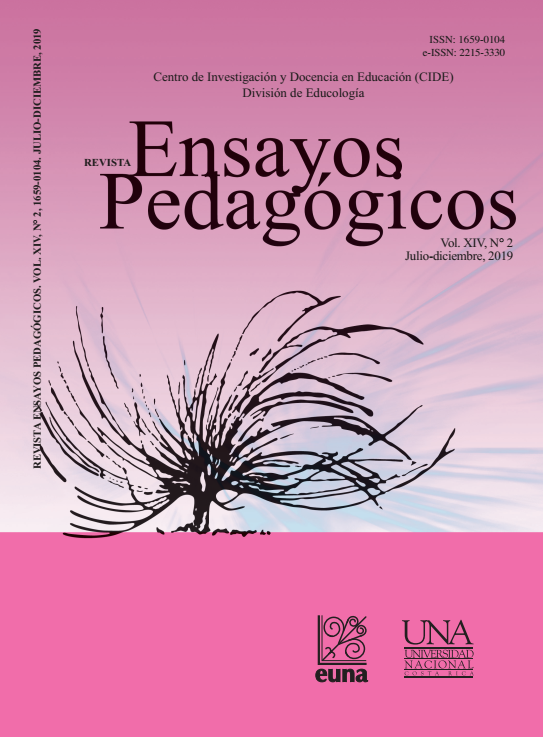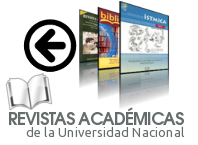Effect of the Program Mothers in Movement on the Self-Esteem and Social Support Strategies of Mothers in Two Prioritary Attention Schools
DOI:
https://doi.org/10.15359/rep.14-2.7Keywords:
social support, self-perception, women, child rearing, housewives, physical activityAbstract
The purpose of this investigation was to determine the effect of the program “Mothers in Movement” in the promotion of physical activity, the improvement of self-esteem, and the use of social support strategies, with the objective of providing tools to mothers to promote the practice of physical activity in their families. This is a quasi-experimental study with a sampling of 15 mothers in the experimental group and 15 in the control group. The results of this study show that the women of the experimental group who were classified in average self-esteem showed an increase to a high ranking self-esteem, a significant increase in practice and enjoyment of physical activity. When analyzing the adoption of new social support, important changes were shown in the use of emotional, instrumental, support and modeling support in mothers. This study showed that an intervention program based on the ecological model, using the practice of physical activity as an instrument, contributes to the increase of self-esteem and to the use of social strategies to support the participants’ families towards active lifestyles, which is hopeful in the use of multilevel interventions in the fight against overweight-obesity and the sedentary lifestyle of childhood.
References
Álvarez, C. (2016). Entendiendo los factores que determinan la actividad física en el entorno escolar desde la perspectiva de los niños y las niñas. Revista MHsalud, 13(1), 1-17. http://dx.doi.org/10.15359/mhs.13-1.2
Beets, M. W., Cardinal, B. J., y Alderman, B. L. (2010). Parental social support and the physical activity-related behaviors of youth: A review. Health Education & Behavior, 37(5), 621-644. http://dx.doi.org/10.1177/1090198110363884
Berenzon-Gorn, S., Saavedra-Solano, N. y Alanís-Navarro, S. (2009). Estrategias utilizadas por un grupo de mujeres mexicanas para cuidar su salud emocional: autoatención y apoyo social. Salud pública de México 51(6), 474–481. Recuperado de http://www.scielo.org.mx/scielo.php?script=sci_arttext&pid=S0036-36342009000600005
Cheatom, O. (2014). Parental influence on children’s physical activity motivation. The University of Minnesota. Arizona: UM. Reach Laboratory. Recuperado de https://reachfamilies.umn.edu/sites/default/files/rdoc/Parental%20Influence%20on%20Children%27s%20Physical%20Activity%20Motivation.pdf
Cheng, L., Mendonça, G. y Farias-Júnior, J. (2014). Physical in adolescents: analysis of the social influence of parents and friends. Jornal de Pediatria, 90, 35-41. https://doi.org/10.1016/j.jped.2013.05.006
Davison, K. K., Cutting, T. M. y Birch, L. L. (2003). Parents’ activity-related parenting practices predict girls’ physical activity. Medicine & Science in Sports & Exercise, 35(9), 1589–1595. https://doi.org/10.1249/01.MSS.0000084524.19408.0C
De Ávila-Quintana, L., Ariza-Egea, S., Llanos-González, B, Herazo-Beltrán, Y. y Domínguez-Anaya, R. (2018). Asociación entre factores socio ambientales y la práctica de actividad física en mujeres embarazadas: estudio de corte transversal. Revista Colombiana de Obstetricia y Ginecología, 69(1), 32–41. http://dx.doi.org/10.18597/rcog.3004
Eisenmann, J. C. (2006). Insight into the causes of the recent secular trend in pediatric obesity: common sense does not always prevail for complex, multi-factorial phenotypes. Preventive Medicine, 42(5), 329-335. https://doi.org/10.1016/j.ypmed.2006.02.002
González, S., Sarmiento, O., Lozano, O., Ramírez, A., y Grijalba, C. (2014). Niveles de actividad física de la población colombiana: desigualdades por sexo y condición socioeconómica. Revista Biomédica, 34(3), 447-459. https://doi.org/10.7705/biomedica.v34i3.2258
Guillén, N. (2010). Intervención psicológica con padres: una alternativa en la búsqueda de logros deportivos. Pensamiento Psicológico, 8(15), 125-145. Recuperado de http://www.cntoledo.com/wp-content/uploads/intervenci%C3%B3n-psicol%C3%B3gica-con-padres.pdf
Hamilton, K. y White, K. (2010). Parental Physical Activity: Exploring the Role of Social Support. American Journal of Health Behavior, 34(5), 573-584. https://doi.org/10.5993/AJHB.34.5.7
Hardman, K. (2008). Physical education in schools: a global perspective. Kinesiology, 40(1), 5-28. Recuperado de https://www.researchgate.net/publication/228680229_Physical_education_in_schools_A_global_perspective
Hosseinzadeh, K., Niknami, S. y Hidarnia, A. (2015). The Effects of Mothers’ Self-Efficacy on Children’s Physical Activity. Biotechnology and health sciences, 2(1), 2–6. Recuperado de http://eprints.qums.ac.ir/1845/1/bhs-02-25731.pdf
Krahnstoever, K., Cutting, M. T., y Birch, L. L. (2003). Parents’ Activity-Related Parenting Practices Predict Girls’ Physical Activity. Medicine & Science in Sports & Exercise, 35(9), 1589–1595. https://doi.org/10.1249/01.MSS.0000084524.19408.0C
Lorenzo, A. y Sampaio, J. (2005). Reflexiones sobre los factores que pueden condicionar el desarrollo de los deportistas de alto nivel. Revista Apunts. Educación Física y Deporte, 2(80), 63-80. Recuperado de https://www.raco.cat/index.php/ApuntsEFD/article/view/300962
Lox, C., Martin K. A., y Petruzzello, S. J. (2010). The psychology of exercise. (3th Edition). Arizona: Holcomb Hathaway.
Maher, J. M., Fraser, S. y Wright, J. (2010). Framing the mother: Childhood obesity, maternal responsibility and care. Journal of Gender Studies, 19(3), 233-247. https://doi.org/10.1080/09589231003696037
Majaed, N. (2016). Parental social support: its role in upbringing of children. Research Paper Social Science, 2(11), 49-52. Recuperado de https://www.researchgate.net/publication/312147606_Parental_social_support_its_role_in_upbringing_of_children
Marcus, B. H. y Forsyth, L. H. (2009). Motivating people to be physically active. Champaign, IL: Human Kinetics.
Meléndez, L., Olivares, S., Lera, L., y Mediano, F. (2011). Etapas del cambio, motivaciones y barreras relacionadas con el consumo de frutas y verduras y la actividad física en madres de preescolares atendidas en centros de atención primaria de salud. Revista Chilena de Nutrición, 38(4), 466-475. http://dx.doi.org/10.4067/S0717-75182011000400010
Mestre, M., Tur, A., Samper, P., Nácher, M., y Cortés, M. (2007). Estilos de crianza en la adolescencia y su relación con el comportamiento prosocial. Revista Latinoamericana de Psicología, 39(2), 211- 225. Recuperado de http://www.redalyc.org/articulo.oa?id=80539201
Ministerio de Salud de Costa Rica. (2009). Encuesta Nacional de Nutrición, Costa Rica 2008-2009. Recuperado de https://www.paho.org/cor/index.php?option=com_docman&view=download&category_slug=alimentacion-y-nutricion&alias=67-encuesta-nacional-de-nutricion-costa-rica-2008-2009&Itemid=222.
Moreno, J. y Johnston, C. (2014). Barriers to Physical Activity in Women. American Journal of Lifestyle Medicine, 8(3), 164-166. https://doi.org/10.1177/1559827614521954
Nyberg, G., Sundblom, E., Norman, A., Bohman, B., Hagberg, J., y Elinder, L. S. (2015). Effectiveness of a universal parental support programme to promote healthy dietary habits and physical activity and to prevent overweight and obesity in 6 year-old children: The healthy school start study, a cluster-randomised controlled trial. Plos One, 10(2), 1-19. https://doi.org/10.1371/journal.pone.0116876
O’Connell, L., Davis, M. y Bauer, N. (2015). Assessing Parenting Behaviors to Improve Child Outcomes. Pediatric Perspectives, 135(2), 287-296. Recuperado de http://pediatrics.aappublications.org/content/pediatrics/135/2/e286.full.pdf
Perrin, E., Sheldrick, C., McMenamy, J., Henson, B. y Carter, A. (2014). Improving Parenting Skills for families of young children in Pediatric settings. JAMA Petriatrics, 168(1), 16-24. https://doi.org/10.1001/jamapediatrics.2013.2919
Peterson, M., Lawman, H., Fairchild, A., Wilson, D. y Horn, L. (2013). The association of self-efficacy and parent social support on physical activity in male and female adolescents. Health Psichol, 32(6), 666-664. https://dx.doi.org/10.1037%2Fa0029129
Prieto-Rodríguez, A. y Agudelo-Calderón, C. (2006). Enfoque multinivel para el diagnóstico de la actividad física en tres regiones de Colombia. Revista Salud Pública, 8(2), 57–68. https://doi.org/10.1590/S0124-00642006000500005
Ramírez, W., Vinaccia, S. y Suárez, R. (2004). El impacto de la actividad física y el deporte sobre la salud, la cognición, la socialización y el rendimiento académico: una revisión teórica. Revista de Estudios Sociales, 18, 67-75. Recuperado de http://www.scielo.org.co/pdf/res/n18/n18a08.pdf
Rhodes, R., Berry, T., Craig, C., Faulkner, G., Latimer-Cheung, A. y Tremblay, M. (2013). Understanding Parental Support of Child Physical Activity Behavior. Am J Health Behav., 37(4), 469-477. https://doi.org/10.5993/AJHB.37.4.5
Rodríguez-Romo, G., Boned-Pascual, C., y Garrido-Muñoz, M. (2009). Motivos y barreras para hacer ejercicio y practicar deportes en Madrid. Revista Panamericana de Salud Pública, 26(3), 244–254. https://doi.org/10.1590/S1020-49892009000900009
Rojas-Barahona, C., Zegers, B., y Förster, C. (2009). La escala de autoestima de Rosenberg: validación para Chile en una muestra de jóvenes adultos, adultos y adultos mayores. Revista Médica de Chile. 137, 791-800. http://dx.doi.org/10.4067/S0034-98872009000600009
Ruiz-Juan, F., Piéron, M., y Baena- Extremera, A. (2012). Socialización de la actividad físico-deportiva en adultos: relación con familia, pareja y amigos. Revista Iberoamericana de Diagnóstico y Evaluación, 2(34), 35-59. Recuperado de http://www.redalyc.org/html/4596/459645438002/
Sallis, J. F., Prochaska, J. J. y Taylor, W. C. (2000). A review of correlates of physical activity of children and adolescents. Medicine and Science in Sports and Exercise, 32(5), 963–975. http://dx.doi.org/10.1097/00005768-200005000-00014
Salmon, J. y Timperio, A. (2007). Prevalence, trends and environmental influences on child and youth physical activity. Med Sport Sci, 50, 183-199. https://doi.org/10.1159/000101391
Sánchez-Méndez, M. y Hernández-Elizondo, J. (2016). Efecto de una intervención educativa sobre valores antropométricos y hábitos de actividad física de familias costarricenses de la región central en el año 2012. Revista Educación, 40(1), 19-38. http://dx.doi.org/10.15517/revedu.v40i1.21695
Saphier, J. y West, L. (2010). How Coaches Can Maximize Student Learning. Phi Delta Kappan, 91(4), 46-50. Recuperado de https://www.rbteach.com/sites/default/files/jons_lwest_coaching_kappan_dec2009-jan2010.pdf
Spence, J., McGannon, K. y Poon, P. (2005). The effect of exercise on global self-esteem: A quantitative review. Journal of Sport & Exercise Psychology, 27, 311-334. Recuperado de https://www.cabdirect.org/cabdirect/abstract/20053164811
Torre-Cruz, M. (2017). Relaciones entre apoyo parental, autoeficacia y actividad física en adolescentes. International Journal of Developmental and Educational Psychology, 1(1), 459-468. http://dx.doi.org/10.17060/ijodaep.2017.n1.v2.959
Uribe, A., Orcasita, L. y Aguillón-Gómez, E. (2012). Bullying, redes de apoyo social y funcionamiento familiar en adolescentes de una institución educativa de Santander, Colombia. Psychologia. Avances de la disciplina, 6(2), 83-99. Recuperado de http://www.redalyc.org/articulo.oa?id=297225788004
Van Sluijs, E. M. F., McMinn, A. M. y Griffin, S. J. (2007). Effectiveness of interventions to promote physical activity in children and adolescents: systematic review of controlled trials. British Medical Journal, 335(703), 1-13. http://dx.doi.org/10.1136/bmj.39320.843947.BE
Ward, D., Saunders, R., Pate, R. (2007). Physical Activity interventions in children and adolescents. Estados Unidos: Human Kinetics.
Welk, G., Corbin, C. y Dale, D. (2000). Measurement issues for the assessment for physical activity in children. Research Quarterly for Exercise and Sport, 71, 59-73. https://doi.org/10.1080/02701367.2000.11082788
Wilson, A. N. y Dollman, J. (2009). Social influences on physical activity in Anglo-Australian and Vietnamese adolescent females in a single sex school. J. Sci. Med. Sport, 12, 119-122. https://doi.org/10.1016/j.jsams.2007.10.012
Published
How to Cite
Issue
Section
License
Ensayos Pedagógicos is subscribed to the Attribution-NonCommertial-NoDerivatives 4.0 International Creative Commons Licence, which allows both authors and readers to freely download, store, copy, and distribute the final approved publisehd version of the manuscript (post-print) as long as this is done without commercial purposes, no derivative works are generated, and the source and author are mentioned. As well, Ensayos Pedagógicos declares that authors will remain the rightful owners of the copyrights of their work in perpetuity.







